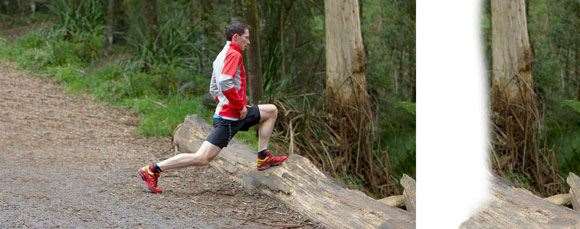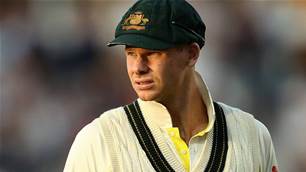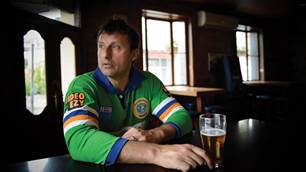Is Stuart Gibson the fittest man in Australia?
Is Stuart Gibson the fittest man in Australia?
 The technique for ultra-running is all about conserving energy,
The technique for ultra-running is all about conserving energy,Images: Joseph Feil
The Glasgow-born, Melbourne-settled ultra-runner sprung to the attention of the athletic fraternity in April this year when he bagged a stunning 11th-place finish at the Marathon des Sables. For the uninitiated, this race traces a 243km line through the Moroccan dunes of the Sahara Desert. Runners have to carry their own provisions. By mid-afternoon, temperatures nudge 45 degrees, at dawn it drops to zero. In his debut race, Gibson finished in 25:31.45. Since then he’s obliterated the race record at the North Face 100 (a 100km gallop through the Blue Mountains), finishing hand in hand with defending champ Andrew Lee in 9:54.19. This month he’s off to Gibraltar to contest the World 100km Championships. A week later he’ll be back home for the Eureka Tower Climb, looking to run the 1958 steps of Melbourne’s 279m-high tower in eight minutes.
So, is there a fitter man in this wide, brown land? If there is, we can’t think of him ... Here’s why.
The game
“I represented Great Britain at the European Championships a decade ago; 1500m was my distance. But I sustained a significant Achilles injury and just fell out of the sport. I came to Australia five years ago and slowly started getting back into my running. Nothing serious, just a few half-marathons. Then I managed to get an entry into the Marathon des Sables and thought, ‘Right, this is a chance to get myself pretty fit again.’ So I slowly built up ...
“I really think ultra-running is going to take off over the next few years. I reckon the sport at the moment is where mountain biking was ten years ago. There’s a vast amount of people who have run a marathon and want to know what they can put their body through next – ultra-running really captures their imagination. I reckon it’ll become a true mainstream sport in five years’ time.”
Clocking the kays
“My training is all about mileage. Over the five months leading into a big event like the Marathon des Sables, I probably average 140-to-150km a week. About four weeks out from the race I’ll peak at 180km. Ninety-five per cent of that running will be off-road: trail running in the Victorian high country or sand running down in Wilsons Promontory. You know, it’s not just running down the promenade – it’s tough terrain, tough on the ankles. I’m running on fire trails and single tracks, a mixture of walking paths and mountain bike trails.
“I still work during the week, so Monday-to- Friday runs tend to be shorter, high-intensity; 20km, which will take around 90 minutes over a strenuous course. On Saturday and Sunday I do my big-mileage stuff. These are my four-to-five-hour runs. Obviously I’m running at a much lower intensity, down to 8-to-10km an hour.
“The key to ultra-running is getting the body used to running very long distances. We talk about four hours as being the magic mark. When you’re training for a standard big-city marathon, no one tends to go over the three-hour mark in their training. But ultra-running has different demands. Once you go past that four-hour mark, your body’s using different energy systems. If you haven’t tested your body beyond that barrier, it’ll really break down. So, for instance, on a Saturday I might go out for a three-hour run, come back to the car, take on some food, then go back out for another two hours.”
Related Articles

The Ultimate NRL 2020 Season Preview

December 2019 Inside Sport hits ‘em for six













